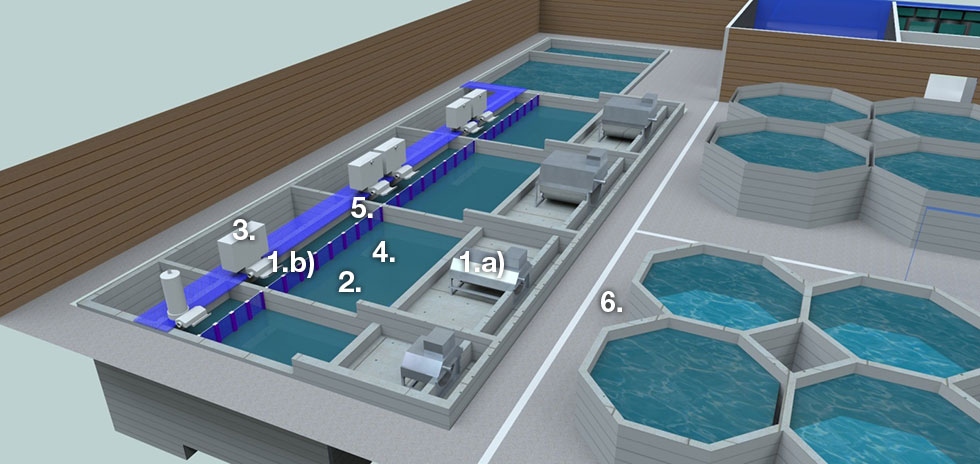Land based aquaculture relates to any operation producing or maintaining aquatic livestock within facilities operating on land. This encompasses; large scale private commercial operations, University research and development systems, seafood holding systems and aquatic transport systems. Aqua EcoSystems has developed and installed them all.
The main focus of AES's work is focussed upon Recirculating Aquaculture Systems commonly referred by the abbreviation "R.A.S.". These systems are highly engineered to give the best in conditions to the fish. They are generally configured using a number of tanks to hold and grow the fish, linked to filtration units to process the water from the tanks and return the same water back to the fish under optimum conditions to promote the best growing conditions.
Systems classified as "RAS" are often done so by the extent to which they "reuse" their water. If a system does not reuse water its water it would be classified as a "flow through" system rather than a recirculation system. Then depending upon the percentage of water reuse, categorised as "Partial RAS", "Standard RAS" and "Zero exchange RAS".
To determine the type of system required, AES must review the requirements of the species, the environmental conditions and availability of good quality water within the location and the parameters to which the operation must work within (market price of the chosen species, environmental legislation, etc.).
RAS in general, follow similar principles and methods to ameliorate the wastes produced by growing fish and to supplement and replace water characteristics used by the fish.
 The "principles, processes and systems" have been described in simple terms but in reality there are many more parameters than described and chemical and physical interaction dynamics to control them which AES incorporate during planning, design and engineering.
The "principles, processes and systems" have been described in simple terms but in reality there are many more parameters than described and chemical and physical interaction dynamics to control them which AES incorporate during planning, design and engineering.